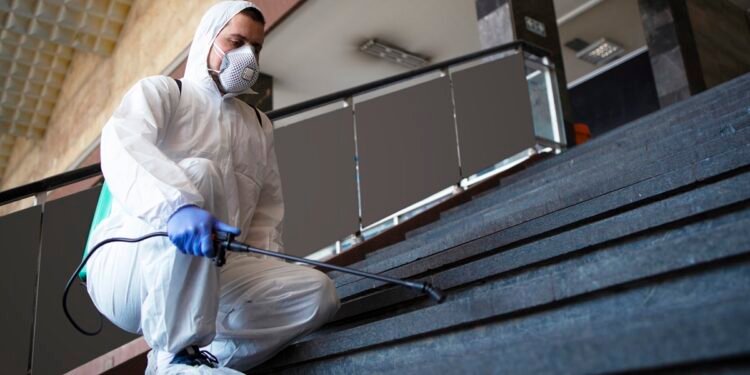Asbestos, once widely used in construction and industrial materials, is now known for its severe health risks. Prolonged exposure to asbestos fibers can lead to life-threatening illnesses such as asbestosis, mesothelioma, and lung cancer. Because of its dangers, the process of asbestos removal is carefully regulated and must be performed with precision and safety. Understanding the facts about asbestos removal helps homeowners, business owners, and property managers make informed decisions when dealing with asbestos-containing materials (ACMs).
Asbestos Is Still Found in Many Older Buildings
Despite being banned or heavily restricted in many countries, asbestos remains in countless buildings constructed before the 1990s. It can be found in insulation, floor tiles, roofing materials, cement sheeting, textured paint, and pipe lagging. The presence of asbestos doesn’t always pose an immediate risk, but once disturbed—through renovations, damage, or demolition—it becomes a significant hazard. Identifying its presence is the first step in managing it safely.
Only Licensed Professionals Should Handle Asbestos Removal
Asbestos removal is not a DIY project. Specialized training and certification are required to handle, remove, and dispose of asbestos legally and safely. Licensed asbestos removalists follow strict guidelines to minimize fiber release and reduce exposure risks. In many jurisdictions, it is illegal for unlicensed individuals to attempt asbestos removal, especially in commercial or large-scale settings.
The Process Begins with Testing and Assessment
Before any removal begins, a thorough asbestos inspection and testing process is conducted. Certified assessors inspect the property and take samples of suspected materials. These samples are sent to accredited laboratories to confirm the presence and type of asbestos. This step is crucial, as not all building materials contain asbestos, and misidentifying them can lead to unnecessary costs and health risks.
Removal Methods Vary Depending on the Situation
There are different approaches to asbestos removal, depending on the condition and location of the material:
- Non-friable (bonded) asbestos is more stable and less likely to release fibers unless damaged.
- Friable asbestos, which crumbles easily, is far more dangerous and requires advanced removal techniques and containment.
Removal methods include complete dismantling, wetting materials to reduce dust, enclosing the area, or sealing materials (encapsulation) when full removal is not necessary.
Safety Precautions Are Paramount
Asbestos removal involves stringent safety protocols to protect workers and prevent contamination. These may include:
- Wearing full personal protective equipment (PPE), including respirators.
- Sealing off the work area with plastic sheeting and negative air pressure units to contain fibers.
- Using HEPA-filtered vacuums and wet methods to prevent dust.
- Avoiding power tools that could release airborne fibers.
Every aspect of the removal process is designed to limit the release of asbestos particles into the environment.
Air Monitoring and Clearance Are Required
Once the removal is complete, air quality monitoring is conducted to ensure no asbestos fibers remain in the area. Independent hygienists often perform this testing using air sampling techniques. The area must pass a final clearance inspection before it can be reoccupied. This is a critical step to verify the success of the removal and protect future occupants from exposure.
Proper Disposal is Regulated and Essential
Asbestos waste must be sealed in clearly labeled, leak-proof containers or bags and transported to designated hazardous waste facilities. It cannot be disposed of with regular household or construction waste. Licensed asbestos contractors handle this disposal to ensure full compliance with local environmental and health regulations.
Removal Can Be Time-Consuming and Costly
Asbestos removal is a detailed and highly controlled process. The duration and cost vary based on factors such as:
- The amount and type of asbestos present.
- Accessibility of the materials.
- Size and complexity of the building.
- Local regulations and permit requirements.
While it may seem expensive, proper removal is a worthwhile investment in health, safety, and legal compliance.
It’s Often Required by Law During Renovations or Demolition
In many regions, asbestos removal is mandatory before any demolition or major renovation. Regulatory authorities typically require a detailed asbestos management plan, especially in workplaces or public buildings. Failure to comply can lead to hefty fines, project delays, and liability for health damages.
Communication and Notification Are Critical
Property owners must notify local regulatory bodies before starting asbestos removal projects. In workplaces or rental properties, tenants and employees should also be informed about the presence of asbestos and the removal plan. Transparency helps manage risks and prevents unnecessary exposure.
Conclusion
Asbestos removal is a highly technical and regulated process that plays a vital role in ensuring health and safety. From initial testing to proper disposal, each step must be carefully planned and executed by licensed professionals. The consequences of mishandling asbestos are severe—not only for those involved in the removal but also for anyone who later occupies the space.
If you suspect asbestos in your home or business, the best course of action is to contact a qualified asbestos removalist. By understanding the facts and respecting the risks, you can ensure a safe and legally compliant process that protects everyone involved.






